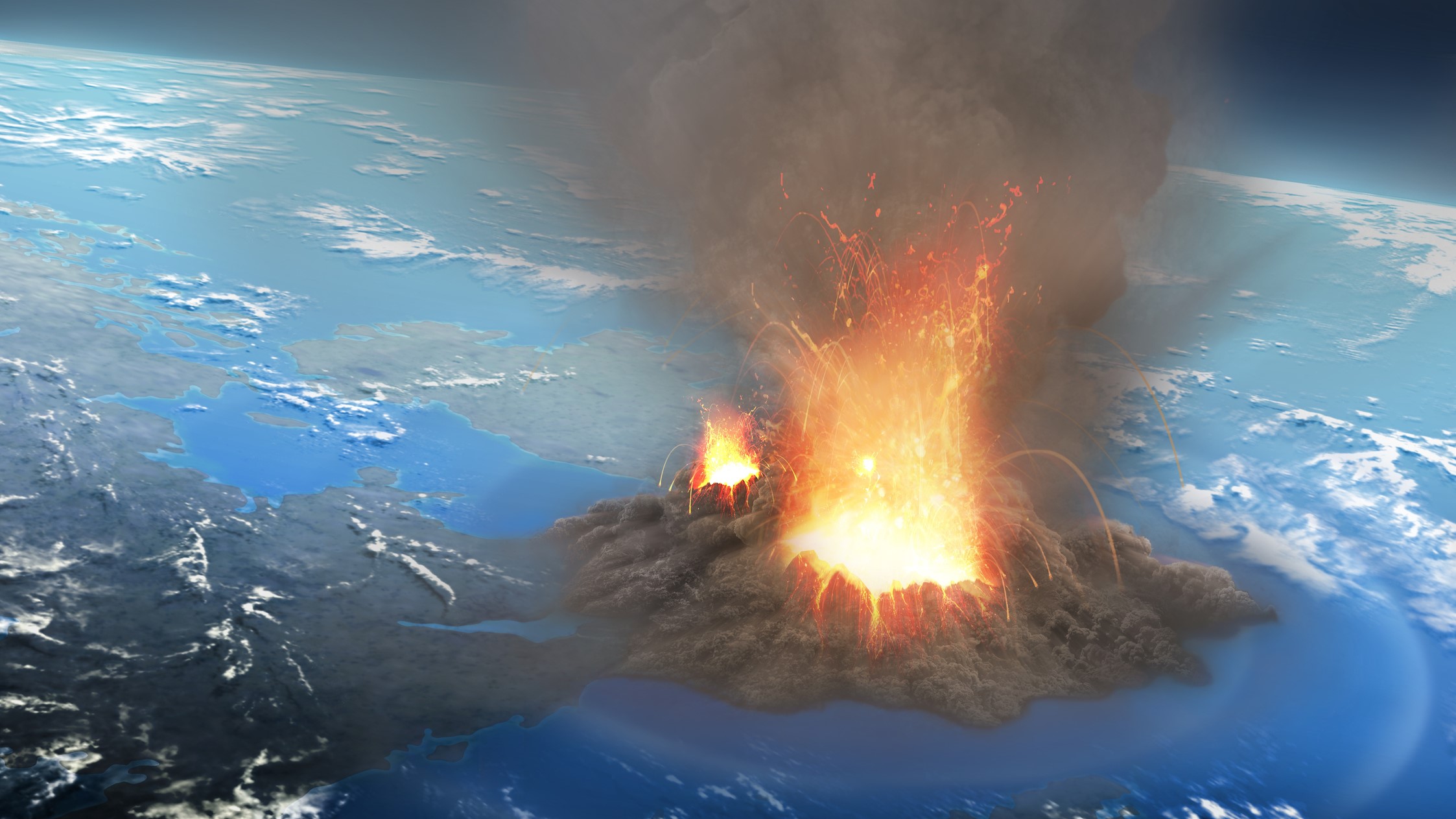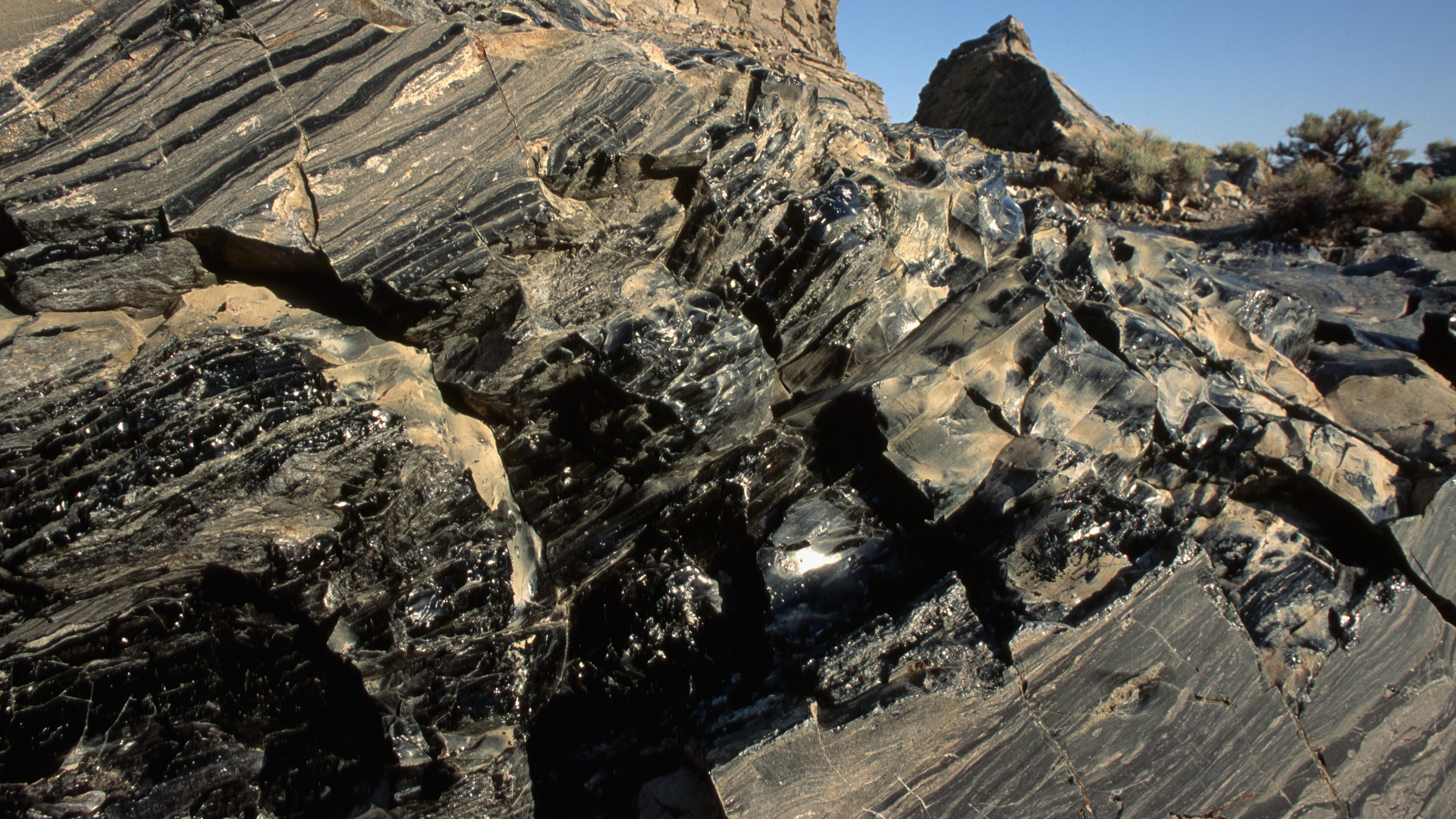Massive New Zealand eruption 1,800 years ago flung volcanic glass 3,000 miles to Antarctica
Scientists disagree about the timing of the Taupō volcanic eruption — one of the largest on Earth in the past 5,000 years — but shards of glass discovered in Antarctic ice could settle this debate.
When New Zealand's Taupō volcano erupted 1,800 years ago, its immense blast flung shards of glass all the way to Antarctica. Now, scientists have unearthed some of this ancient volcanic debris — which could help pinpoint the exact year this huge eruption took place.
Fallout from the Taupō eruption — one of the most violent eruptions on Earth in the last 5,000 years — has proved incredibly tricky to find, dragging out a decades-long debate over its exact timing.
Radiocarbon dating of trees that were killed by the blast indicated a date of A.D. 232, but some experts argued the evidence may have been contaminated and the eruption occurred up to two centuries later.
Researchers looking for Taupō debris in West Antarctica finally struck gold, when they drilled up ice cores from 915 feet (279 meters) below the ground.
"Our discovery of seven geochemically unique volcanic glass shards buried deep within an ice core confirms the likely timing of the eruption in late summer/early autumn in the year 232," study lead author Stephen Piva, a doctoral candidate in the school of geography, environmental and Earth sciences at Te Herenga Waka Victoria University of Wellington in New Zealand, said in a statement.
Related: Were Neanderthals really killed off by Campi Flegrei, Europe's awakening 'supervolcano'?
The researchers analyzed the debris' chemical composition, which enabled them to trace six shards to the Taupō eruption and the seventh to a much earlier eruption of the same volcano — the Ōruanui eruption, which occurred roughly 25,500 years ago, according to the study, published Monday (Oct. 9) in the journal Scientific Reports.
Get the world’s most fascinating discoveries delivered straight to your inbox.
The seven shards were found at similar depths, suggesting volcanic glass from the Ōruanui eruption was buried near the volcano then unearthed and launched into the atmosphere thousands of years later during the Taupō eruption. Strong south-westerly winds then picked up the flying debris and dispersed it over New Zealand's North Island, throughout the southwest Pacific Ocean and all the way to West Antarctica roughly 3,100 miles (5,000 kilometers) away, according to the study.
To determine when the glass shards landed in Antarctica, researchers looked at the surrounding ice layers.
"Volcanic debris trapped in the ice allows us to date when the eruption occurred, because we can link it to the modeled age of the ice," Piva said.
The discovery of glass from two separate eruptions of the same volcano provides a "unique and undeniable double fingerprint" confirming it came from Taupō, he said. The huge distance between the volcano in New Zealand and West Antarctica also shows how powerful these eruptions were, because they were picked up by winds high up in the atmosphere, he said.
The Taupō eruption lasted between several days and several weeks, according to the study, and culminated in an "extraordinarily energetic" explosion of lava that ravaged an area spanning 7,700 square miles (20,000 square kilometers).
Given the magnitude of the eruption, "it is puzzling as to why this event has been so challenging to detect and validate in Antarctic ice cores," the researchers wrote in the study.

Sascha is a U.K.-based staff writer at Live Science. She holds a bachelor’s degree in biology from the University of Southampton in England and a master’s degree in science communication from Imperial College London. Her work has appeared in The Guardian and the health website Zoe. Besides writing, she enjoys playing tennis, bread-making and browsing second-hand shops for hidden gems.




